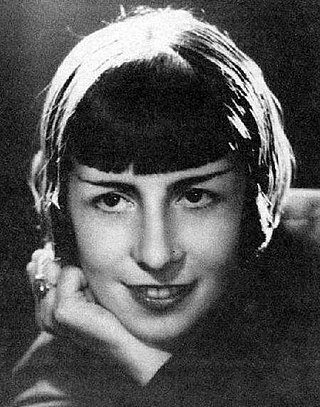
Adolfo Bioy Casares was an Argentine fiction writer, journalist, diarist, and translator. He was a friend and frequent collaborator with his fellow countryman Jorge Luis Borges. He is the author of the Fantastique novel The Invention of Morel.

Ramona Victoria Epifanía Rufina Ocampo was an Argentine writer and intellectual. Best known as an advocate for others and as publisher of the literary magazine Sur, she was also a writer and critic in her own right and one of the most prominent South American women of her time. Her sister was Silvina Ocampo, also a writer. She was nominated for the 1970 Nobel Prize in Literature.

Silvina Ocampo was an Argentine short story writer, poet, and artist. Ocampo's friend and collaborator Jorge Luis Borges called Ocampo "one of the greatest poets in the Spanish language, whether on this side of the ocean or on the other." Her first book was Viaje olvidado (1937), translated as Forgotten Journey (2019), and her final piece was Las repeticiones, published posthumously in 2006.

Leonor Fanny "Norah" Borges Acevedo, was an Argentine visual artist and art critic, member of the Florida group, and sister of the Argentine writer Jorge Luis Borges.

María Kodama Schweizer was an Argentine writer and translator. The widow of author Jorge Luis Borges, she was the sole owner of his estate after his death in 1986. Borges had bequeathed to Kodama his rights as author in a will written in 1979, when she was his literary secretary, and bequeathed to her his whole estate in 1985. They were married in 1986, shortly before Borges' death.
Manuel Peyrou was an Argentine writer and journalist.

María Luisa Bombal Anthes was a Chilean novelist and poet. Her work incorporates erotic, surrealist, and feminist themes. She was a recipient of the Santiago Municipal Literature Award.

Gaucho literature, also known as gauchesco ("gauchoesque") genre was a literary movement purporting to use the language of the gauchos, comparable to the American cowboy, and reflecting their mentality. Although earlier works have been identified as gauchoesque, the movement particularly thrived from the 1870s to 1920s in Argentina, Uruguay and southern Brazil after which the movement petered out, although some works continued to be written. Gauchoesque works continue to be read and studied as a significant part of Argentine literary history.

Noé Jitrik was an Argentine literary critic.

Edgardo Cozarinsky was an Argentine writer and filmmaker. He was best known for his Spanish-language novel Vudú urbano.
Blas Matamoro is an Argentine writer, lawyer, journalist and translator.

Susana Calandrelli was an Argentine writer and teacher.
María Esther Vázquez was an Argentine writer and journalist, best known as a collaborator and biographer of Jorge Luis Borges and Victoria Ocampo.

Luis Alberto Ambroggio is an Argentine American poet, independent scholar and writer. Full Member of the North American Academy of the Spanish Language and correspondent of the Spanish Royal Academy. His works include essays, poetry and translations.

Sara Facio was an Argentine photojournalist and publisher. She was best known for having photographed, along with Alicia D'Amico, various cultural personalities, including Argentine writers Julio Cortázar, María Elena Walsh and Alejandra Pizarnik. She co-founded the Centro Cultural la Azotea in 1973.
Margarida Cabral de Melo (1570–1631) was a Portuguese noblewoman related to the discoverer of Brazil Pedro Álvares Cabral. In 1599 she settled with her husband and children in Buenos Aires. She was one of the most distinguished women in the Río de la Plata, in the early 17th century, owned of luxury homes, farms and vineyards.
Margarita Aguirre was a Chilean writer and critic. She was the friend and first biographer of Nobel-winning poet Pablo Neruda.

Lily Sosa de Newton was an Argentine historian, biographer and essayist. She was a pioneer in historical research on Argentine women in different fields. She also wrote numerous biographies of historical figures.
Sylvia Molloy was an Argentine professor, author, editor and essayist based in New York.
Noemi Ulla (1940–2016) was an Argentine writer and scholar. She was born in Santa Fe and studied in Rosario. There she got involved with a group of young writers that included Hugo Gola, Rubén Sevlever and Aldo Oliva among others. She would eventually get married to Oliva. Her Rosario days were the subject of her first novel Los que esperan el alba (1967).













